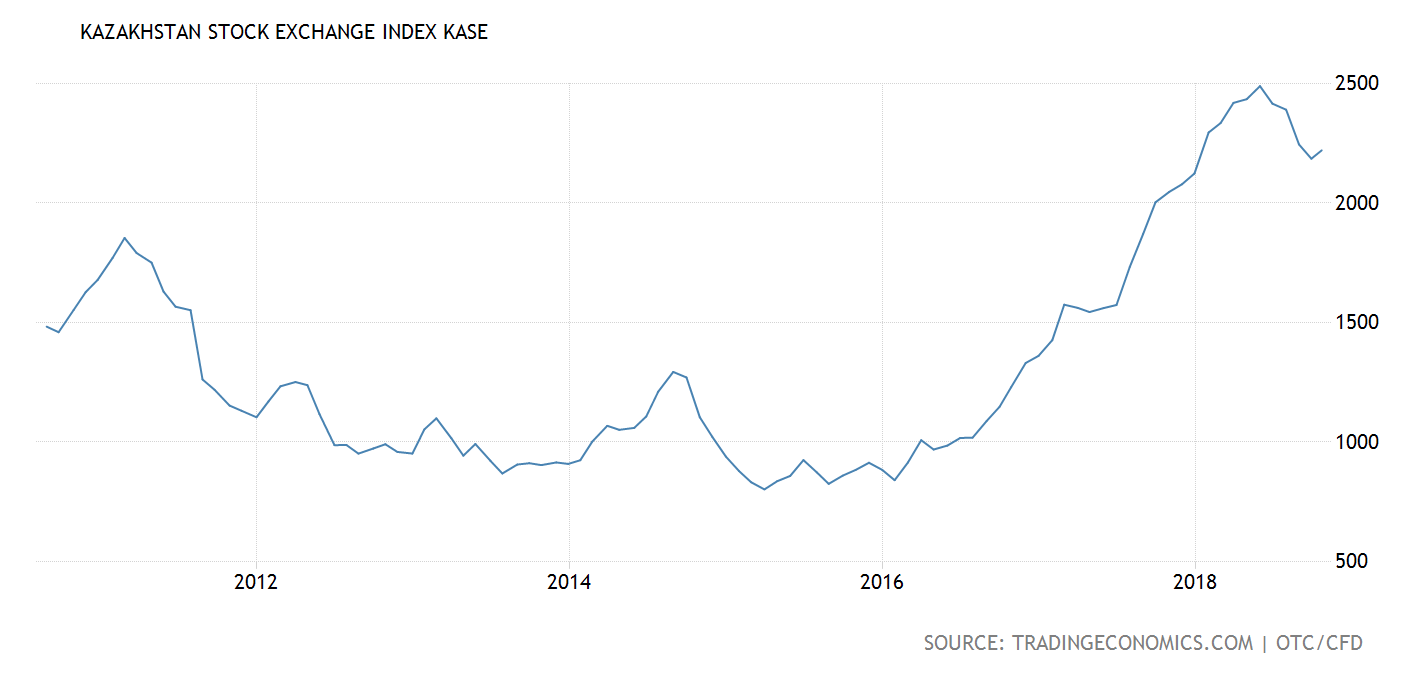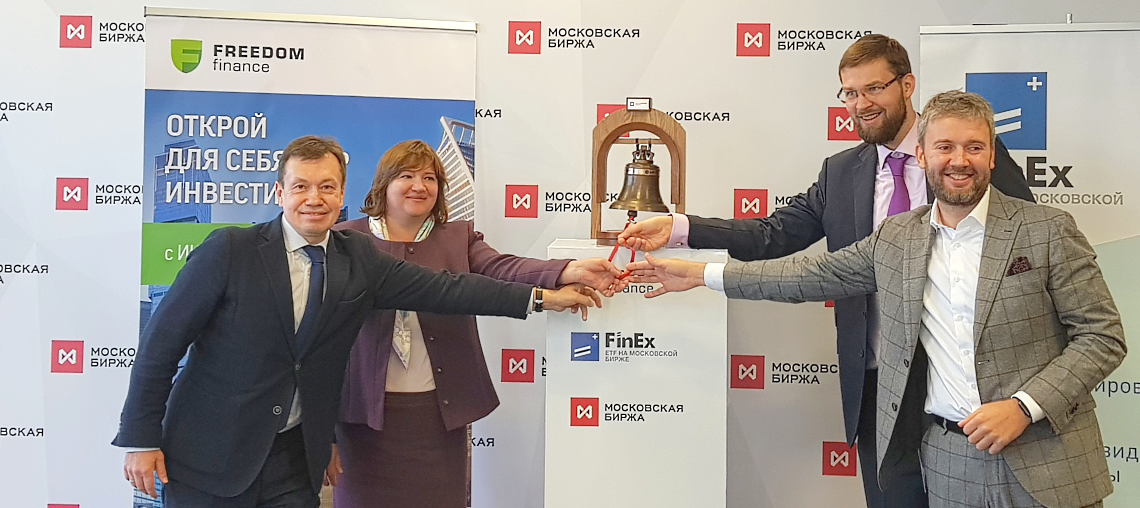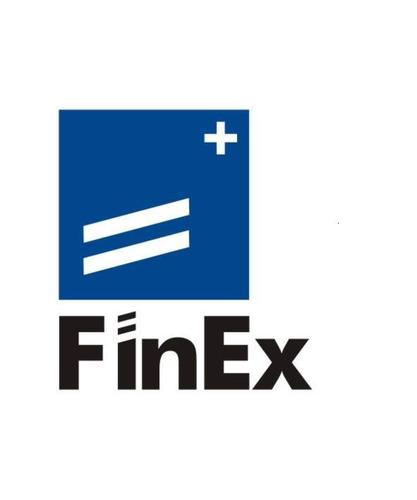Kazakhstan is a central Asian country best known to western investors as the birthplace of the apple. As of this month, Kazakhstan has an ETF tracking its stock market, thanks to a new listing from FinEx, the Russian ETF provider.
But what opportunities might Kazakhstan provide? What do the currency and local stock exchange look like? And is corruption a problem? We spoke to Oleg Yanelev, a senior partner FinEx ETF, to find out.
ETF Stream: You've just listed a new ETF in Russia that tracks the Kazakhstan stock market. Kazakhstan is a bit of a blind spot for us. What are the opportunities for investors in Kazakhstan?
Oleg Yankelev: Kazakhstan is a frontier market which is relatively stable in terms of its macro-economic and political environments compared to other frontier markets. Moreover, Kazakhstan is rich in different types of commodities and able to compete with other emerging markets in terms of economy and financial markets attractiveness. With current yearly GDP growth of 4% the Kazakh market is undervalued in terms of P/E ratio compared to Mexico, Columbia, Qatar and Chile. Currently this ratio is 10.8x compared to the emerging markets average of 14.9x. The average dividend return of KASE is 5.3%, which is larger than the average of emerging markets by 65%. Our fundamental research of the seven companies from the KASE index estimates a weighted-average upside potential for the KASE index of 26%.

Are the big companies mostly former Soviet monopolies?
To a large extent, yes. However new industries have developed, which did not exist in USSR. In the case of companies that are included in KASE index two companies were founded after the Soviet period. One of them is the Bank CenterCredit, the first private bank of Kazakhstan, and the other one is KCell, the largest mobile operator in Kazakhstan by number of customers. The remaining five companies were founded in Soviet Union and were considered as monopolies within Kazakh SSR, but their operations and market conditions in which they operate have changed a lot since the USSR dissolution. As of today many of them are no longer monopoly companies, though they remain one of the largest in their industries.
How liquid are Kazakh capital markets? And is the value of the Tenge a problem for investors looking to enter/exit?
Overall volume trade on KASE during first 9 months of 2018 was KZT 96.3 trillion [editors note: US$260bn]. Shares trading volume for the same period was KZT 476 billion (which was up 100% compared to the same period of 2017). Average daily volume of equity market is KZT 2.6 billion.
Since August 2015, the exchange rate regime of KZT switched from fixed to floating and Kazakh Central Bank started an inflation targeting regime similar to many of those followed by central banks around the world. The Central Bank's transparent monetary policy, availability of detailed macro-statistical information and the Central Bank's limited participation in forex market allow an investor to undertake rigorous fundamental and technical analysis on value of KZT. Our ETF gives the opportunity for a foreign investor to buy KZT assets and get exposure to the currency alongside the equity exposure. The Central Bank rarely intervenes in the forex market, generally only participating during large imbalances to provide the necessary liquidity when demand spikes.

FinEx ringing the bell on the Moscow Exchange.
What about Kazakh corporate governance. Is corruption a problem?
Corruption is a problem mostly at the level of individuals. There are no known cases and incidents with regards to listed companies. Three out of the seven companies included in KASE index (with one more listing planned) are also listed on the London Stock Exchange and no reported incidents of corruption.
Listed companies have independent directors and committees, disclose their financial information every quarter and whether they follow the corporate governance code. In addition to yearly external audits, internal audit committee within listed companies are well established. The external auditors in case of companies from KASE index represents well-known Big-4 audit companies. Shareholders' rights are regulated by laws and a cumulative voting system is in place, for example, shareholders meeting can be called by shareholders with 10% of the capital and shareholders have pre-emptive-rights if capital increases.
The fund is listed in Russia. The Russian ETF market is something that may be a bit new to our readers. Could you please explain how it may be different and similar from London or the US?
The Russian ETF market emerged in 2013, when FinEx launched Russia's first ETF, the FinEx Tradable Russian Corporate Bonds UCITS ETF (FXRB). Since then, the market has expanded with a CAGR of 166%. Now there are two European providers of ETFs in Russia - FinEx ETF and ITI Funds. The Russian ETF market is a part of the European ETF market, and is larger than the ETF markets of Austria, Belgium, Poland, Portugal and Turkey. However it is still small compared to the leading European markets - UK, Germany and France.
Any Russian non-qualified investor is eligible to buy shares of locally-listed ETFs, they are allowed to be purchased through standard brokerage accounts, Individual Investment accounts (IIAs), advisory services and robo-advisors (also operated by FinEx).
We are planning to focus on further development of FinEx's B2B2C Robo Platform, Financial Autopilot, which has "Robo-Advisor 4.0" capabilities with fully automated processes that allow the shift between different asset classes based on changing market conditions and individual investment needs such as risk appetite, liquidity aspects. The technology monitors and adjusts single client portfolios to stay on track with their selected investment goals. In collaboration withFinEx two robo-advisory platforms have been launched (one with the largest Russian bank, Sberbank, and the other with the number one e-money wallet provider, Yandex.Money) with a number of similar projects in the pipeline.
With respect to new ETF launches, we have made a strategic decision going forward to focus on co-branded products with major Russian market players, or others looking to enter the European ETF marketplace.



